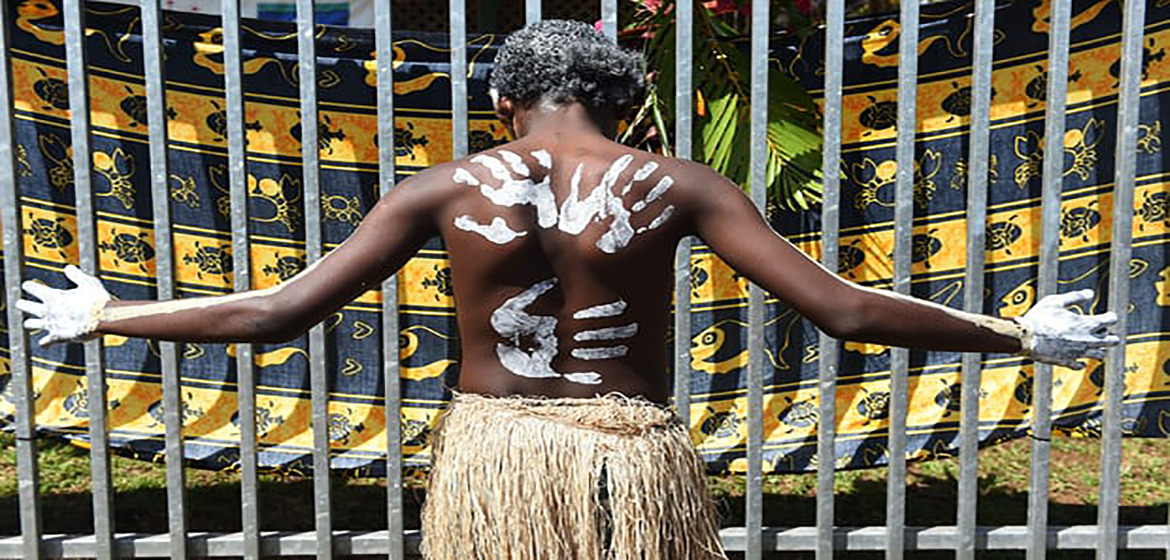By Calla Wahlquist
World Congress on Public Health told focus on drug and alcohol abuse not enough to reduce global suicide rates
The solution to reducing the staggering rates of suicide among indigenous communities worldwide lies in strengthening culture rather than just focusing on issues such as drug and alcohol abuse, experts at a global conference have said.
Suicide is and efforts to solve the problem using methods developed in non-indigenous communities have not reversed the trend.
Speaking at the World Congress on Public Health in , Canadian First Nations woman Carol Hopkins, from the Lenape Nation at Moraviantown, Ontario, said Canadian First Nations people were turning to creation stories as a way to build resillience and strengthen identity for the whole community.
She referred to a project by the in Canada, of which she is executive director, which used indigenous concepts of wellness to develop an model specifically designed to assess the mental health of First Nations peoples.
Hopkins said indigenous knowledge systems and creation stories had been “discounted as philosophies” by modern western understandings of health and dismissed as “not meaningful as evidence for us today”.
“But, without a vision that’s grounded in that foundation, then we make the mistake of talking about just our deficits, the things that take our life, the things that cause us hurt and pain,” she said.
“And while those stories are very important and very true ... if all we focus on is our deficits, if all of our systems of data focus on just the deficits, all of our indicators, our stories about what’s wrong with us, then how do we ever know what’s right with us? How do we ever know as a people when we achieve a sense of wellness?
“We can’t afford to just focus narrowly on the deficits. It’s the deficits that actually cause suicide.”
Those deficits – poverty, lack of adequate housing, poor education, poor healthcare – are stark and are common across the indigenous communities of the three countries involved in the world leaders suicide prevention forum: Canada, Australia and .
Rates of suicide for indigenous people in Canada are almost twice as high as rates for non-indigenous Canadians, according to , and 10 times as high among Inuit communities.
Aboriginal and Torres Strait Islander people are similarly over-represented in Australian suicide rates, according to . Aboriginal and Torres Strait Islander people die by suicide at a rate of 25.5 deaths per 100,000 people, compared with 12.5 deaths per 100,000 non-Indigenous people.
The disparity is slightly lower in New Zealand, according to , which show the suicide rate for Māori men and boys is 21.1 deaths per 100,000 in the population compared to 14.6 per 100,000 for non-Māori men. The rate for Māori women and girls is 11.1 per 100,000, compared with five per 100,000 for non-Māori women and girls.
Hopkins said focusing on those statistics creates a narrative of despair while her organisation aimed to build strength through hope.
“We have to change the way think about mental health and wellness if we’re ever going to make a difference because if we don’t dare to change the way we think, if we continue to tell the story of mental illness, if we continue to rely not the experts who come in and treat the individual without knowing what difference it makes for family and community, then we continue to lose our [cultural] resources,” she said.
Michael Naera, a Māori man from Rotorua and Kia Piki Te Ora project leader for the in New Zealand, said suicide prevention organisations needed to engage community and family leaders who can address suicide and the causes of suicide including intergenerational trauma, drug and alcohol abuse and family violence, within their own circles.
Naera said he worked as a suicide prevention worker for years before addressing problems that existed within his own family, a decision he described as “the scariest thing I could have done”.
“Suicide prevention, indigenous suicide prevention, starts in your home … Because, when you look in the mirror and you see your family falling apart, how do we jump over the mirror and help someone else with our integrity intact?”
Naera also chastised governments for rolling out suicide prevention policies intended for indigenous people without involving indigenous people in the development of those policies and programs.
“If indigenous people aren’t in the mirror [alongside the developers of that policy] then you’ve go to question yourself: is this program going to help indigenous people?”
“Indigenous suicide does have many causes … I think there’s a fallacy in thinking that all suicides, Aboriginal and non-Aboriginal, are the same,” she said. “I think there is a vast difference between them.”
Dudgeon said Aboriginal and Torres Strait Islander leaders had to be wary of not adopting the same bad habits they criticised in non-Indigenous organisations and in government, of ignoring local leaders and voices or not listening to the voices of those in higher-risk groups, such as young people and LGBTI people.
“That thing that we demand off the mainstream, self-determination and nothing about us without us, we need to do that with our people as well,” she said.
Source:
Related to SDG 3: Good health and well-being



